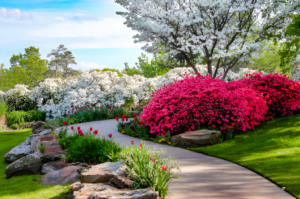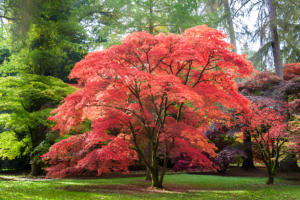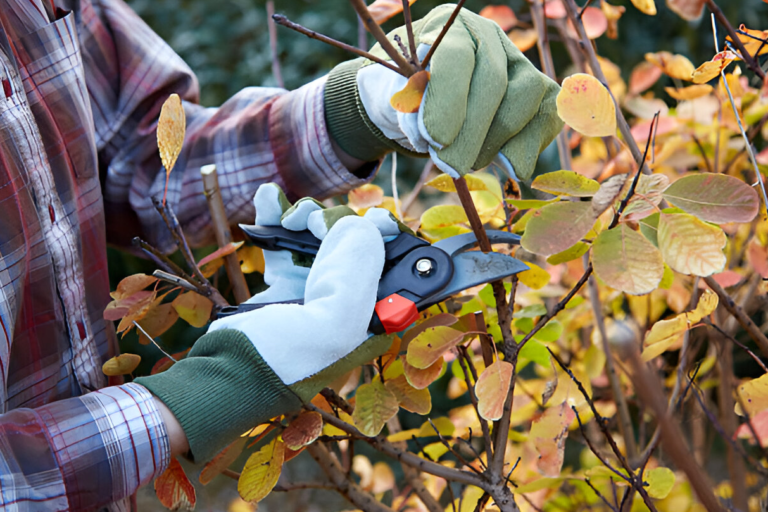Pruning your plants can help maintain their health, but timing is everything. Some plants are better left untouched until their optimal pruning season. There are several plants not to prune in fall, as cutting them back now can cause more harm than good. Pruning these plants in fall can stimulate new growth that’s vulnerable to frost, weakening the plant and reducing next year’s blooms.
In this guide, we’ll explore 15 plants that beg you not to prune them this fall and the best times to cut them back instead.
Why Some Plants Shouldn’t Be Pruned in Fall
Pruning certain plants in the fall can hinder their ability to thrive in the upcoming seasons. When you prune, you remove parts of the plant that are critical for protection during the cold months, or you might even disrupt bud formation for next year’s growth. This is particularly important for spring-flowering shrubs and perennials that rely on undisturbed buds to bloom when temperatures warm.
Additionally, pruning in fall often stimulates the plant to produce new growth, which is highly susceptible to frost damage. This can not only damage the plant but also reduce its ability to flower or grow vigorously in the next season. For a full list of perennials not to prune, check out this guide on why some plants need to be left alone during fall.
How to Identify Plants That Shouldn’t Be Pruned in Fall

To avoid damaging your plants, it’s crucial to recognize those that should remain intact during the colder months. Woody plants, spring-bloomers, and plants with winter interest should often be left untouched. A plant’s dormancy period is critical—during this time, trimming can cause unnecessary stress. Some plants even provide wildlife shelter during winter, with their stems and seed heads attracting beneficial insects or feeding birds.
When in doubt, look for plants that set buds during summer or early fall for spring blooming. Disturbing these buds will result in fewer flowers, and it’s best to wait until the plant has completed its flowering cycle to prune. For more details on when not to prune and fall garden clean-up tips, you can read this resource.
Plants that bloom on old wood, such as azaleas and rhododendrons, should never be pruned in fall. Cutting these plants in fall removes next season’s buds, significantly reducing their bloom potential. Similarly, woody perennials and ornamental grasses should be left intact to protect their root systems and provide winter interest. To understand more about the effects of timing on plant care, you can also refer to our resource on what herbs to plant together. You can also refer to our resource on what herbs to plant together.
15 Plants You Shouldn’t Prune in Fall
1. Azaleas and Rhododendrons

- These broadleaf evergreens set their buds in late summer.
- Pruning in the fall can remove next year’s flowers.
- Best to prune in late spring after blooming.
2. Forsythia
- Forsythia blooms on old wood, so pruning after spring helps maintain its shape.
- Cutting in fall will reduce the number of spring flowers.
- Trim right after flowering in late spring.
3. Lilacs
- Like forsythia, lilacs set buds for spring on old wood.
- Pruning in fall removes these buds and reduces blooms.
- Wait until after the spring bloom to prune.
4. Coneflower (Echinacea)
- Coneflowers develop seed heads that feed birds during winter.
- Removing these heads in fall deprives wildlife of food.
- Trim dead stems in early spring.
5. Black-eyed Susan (Rudbeckia)

- Like coneflowers, black-eyed Susans provide important winter food with their seed heads.
- Best to leave them standing through the winter.
- Prune in early spring for neat growth.
6. Russian Sage (Perovskia atriplicifolia)
- Russian Sage benefits from being left untrimmed in fall as it provides winter interest.
- Cutting in fall may expose the plant to cold damage.
- Prune lightly in spring to encourage growth.
7. Butterfly Bush (Buddleia spp.)
- Pruning in fall can lead to dieback in colder climates.
- Butterfly bushes should be left alone until early spring when they can be pruned back.
- Avoid over-pruning to maintain a healthy plant.
8. Globe Thistle (Echinops)
- Globe thistles are another plant that benefits wildlife with their seed heads.
- Wait until spring to cut back dead growth.
- Helps to retain plant vigor and structure.
9. Certain Hydrangeas (e.g., Hydrangea macrophylla)
- Pruning Hydrangea macrophylla in fall can eliminate flower buds set for next year.
- Hydrangeas bloom on old wood, so prune in late summer after flowers fade.
- Avoid heavy pruning to maintain shape.
10. Boxwoods
- Boxwoods are vulnerable to frost damage if pruned in fall.
- Lightly shape them after the growing season, but avoid heavy pruning.
- Best to prune in early spring to maintain their structure.
11. Ornamental Grasses (e.g., Miscanthus and Pampas Grass)
- These grasses add texture and interest to the winter garden.
- Cutting them in fall will leave bare spots and prevent natural protection.
- Trim back in early spring before new growth begins.
12. Lavender (Lavandula)
- Pruning lavender too late in the season can weaken the plant.
- Wait until spring or summer to trim for shape and health.
- Fall pruning may expose lavender to cold damage.
13. Roses (Certain Varieties)
- While some roses can tolerate a fall trim, it’s generally safer to wait until spring.
- Pruning in fall can promote frost-sensitive new growth.
- Spring pruning encourages healthier blooms.
14. Clematis (Certain Varieties)
- Prune clematis only after its bloom cycle is complete, depending on the type.
- Fall pruning can cut off next year’s buds.
- Follow specific pruning guidelines based on clematis variety.
15. Japanese Maple (Acer palmatum)

- This tree is sensitive to pruning stress, especially in fall.
- Wait until late winter or early spring to shape and maintain.
- Fall pruning increases the risk of frost damage.
When to Prune These Plants Instead
The best time to prune most of these plants is after they have bloomed. For spring-flowering shrubs like lilacs and forsythia, wait until late spring or early summer to prune. For perennials like coneflower and black-eyed Susan, it’s best to prune in early spring, just before new growth begins.
For evergreen shrubs like azaleas, pruning should be done after the blooming period, usually in late spring. Pruning at the right time ensures your plants will thrive and bloom as expected.
FAQs
What happens if I prune plants in the fall?
Pruning in fall can encourage new growth that’s vulnerable to frost, which may damage the plant and reduce future blooms.
Can I prune evergreen shrubs in fall?
It’s best to avoid pruning most evergreen shrubs in fall, as this can expose them to frost damage. Wait until after they bloom in spring.
When should I prune hydrangeas?
The timing depends on the type of hydrangea. Hydrangea macrophylla should be pruned after it flowers in late summer.
How do I know if a plant should be pruned in fall?
Check if the plant blooms on old or new wood and whether it provides winter interest. If it’s a spring bloomer, it’s best to wait.
By leaving certain plants unpruned this fall, you not only protect them from frost damage but also allow them to bloom to their fullest next season. Understanding when to prune and caring for each plant properly will ensure your garden remains healthy and vibrant year-round.
